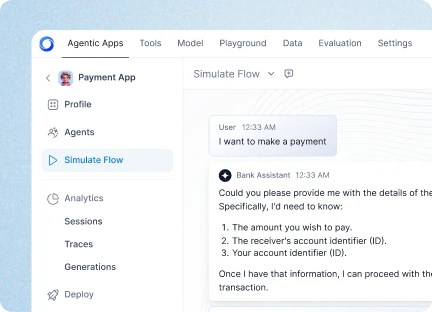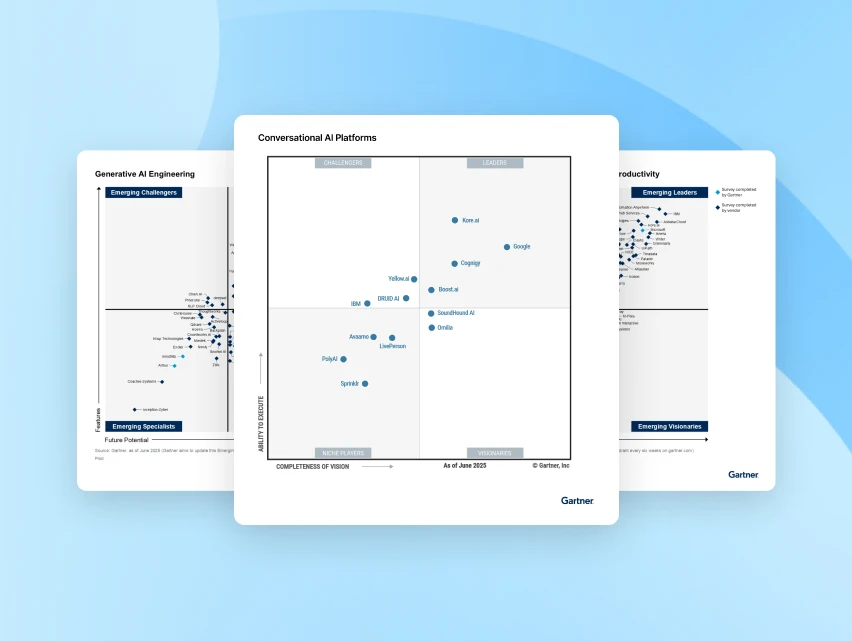Understanding Agentic RAG: A Comprehensive Guide
Agentic RAG is transforming how organizations implement enterprise AI by offering a practical and production-ready framework that improves existing systems rather than requiring teams to build new architectures from the ground up. Its value comes from the way it integrates directly into established enterprise workflows, data platforms, and application environments, allowing companies to upgrade their AI capabilities with minimal disruption. Instead of relying on rigid retrieval methods or fragile prompt-based logic, Agentic RAG introduces an intelligent orchestration layer that manages reasoning steps, adjusts retrieval strategies, and optimizes context in real time to produce accurate and reliable outputs.
For enterprise implementation teams, this framework provides a clear and modular approach to strengthening current AI deployments, whether those deployments support customer service, knowledge automation, operational copilots, or domain-specific decision support. Agentic RAG integrates smoothly with existing enterprise AI infrastructure, enhancing current language models, retrieval engines, and knowledge repositories through agentic reasoning and dynamic context refinement. This makes it an ideal solution for organizations that want advanced AI performance without the complexity or cost of building custom agent systems. Its adaptability across regulated, data-intensive, and mission-critical environments enables enterprises to deploy more intelligent, context-aware, and dependable AI at scale.
What is Agentic RAG?
Agentic Retrieval-Augmented Generation, or Agentic RAG, represents the current state of the art in applied AI architecture. It extends the traditional RAG model by adding an intelligent, agent-driven control layer that can reason about tasks, determine what information it needs, and actively shape the context used during generation. Instead of behaving like a static pipeline that retrieves some documents and feeds them into a model, Agentic RAG operates more like a coordinated reasoning system, one that can plan, adapt, validate, and refine its own steps in real time. This makes it exceptionally well-suited for enterprise environments where accuracy, traceability, and contextual awareness are non-negotiable.
At the center of the architecture is the A-R-A-G pattern, Agentic, Retrieval, Augmentation, and Generation, a sequence that captures how the system thinks, gathers evidence, transforms that evidence, and ultimately produces a grounded output. Each component plays a distinct role but works together as a tightly integrated process.
Agentic (A) is the intelligence that drives everything. This layer interprets the user’s goal, plans the reasoning steps, chooses retrieval strategies, and decides when context needs to be refined. It is capable of re-evaluating its own decisions, iterating through multiple cycles, and adapting the workflow based on the evolving state of the task. In practical terms, this is what allows Agentic RAG to behave like an autonomous system rather than a simple query-response mechanism.
Retrieval (R) supplies the system with high-value, domain-specific information by pulling from vector stores, search indices, structured data repositories, and long-form content. Retrieval in Agentic RAG is not a one-shot operation. The agent interprets the task, formulates or reformulates queries, adjusts search parameters, and runs multi-hop retrieval when deeper context is needed. This ensures the system gathers not just relevant information, but the right information for the problem it is solving.
Augmentation (A) is where retrieved material is transformed into a usable reasoning context. Rather than passing raw documents to the model, the system restructures, filters, summarizes, enriches, and aligns the information to match the requirements of the task. The agent evaluates this augmented context, checks for completeness, and triggers additional retrieval when needed. This is the stage where Agentic RAG differentiates itself most clearly from earlier RAG designs, because augmentation becomes an active, intelligent process rather than a passive formatting step.
Generation (G) is the final stage, where a large language model synthesizes the curated context into a coherent output. Because the input has been actively retrieved and shaped under the agent’s supervision, the generative step produces responses that are far more accurate, grounded, and compliant with domain constraints. The agent continues to monitor this stage by validating the output, checking for inconsistencies, and iterating when corrections are required.
Together, these four components form a modular, high-performance architecture capable of powering multi-step reasoning, domain-specific copilots, workflow agents, and complex decision-support systems. Agentic RAG is already deployed across industries such as healthcare, finance, legal operations, and enterprise knowledge management, demonstrating its maturity, reliability, and practical value.
As a result, Agentic RAG has become the new foundational standard for building intelligent, context-driven AI systems, one that enables organizations to move beyond simple automation toward adaptive, reasoning-capable AI that can operate confidently in real-world environments. It is this combination of autonomy, contextual awareness, and architectural flexibility that positions Agentic RAG at the center of the next generation of enterprise AI.
Key Capabilities of Agentic RAG:
Agentic RAG, or Agentic Retrieval-Augmented Generation, introduces advanced capabilities that significantly improve how enterprise AI systems retrieve, process, and generate information. These capabilities transform traditional RAG models into adaptive, context-aware reasoning systems that deliver higher accuracy, reliability, and operational value. The following sections break down the core features that make Agentic RAG a powerful architecture for modern enterprise AI applications.
1. Enhanced Retrieval for High-Accuracy Enterprise AI
One of the foundational strengths of Agentic RAG is its enhanced retrieval capability. Unlike static RAG pipelines, Agentic RAG uses intelligent retrieval strategies that continuously adapt based on the task and the available data. This ensures that enterprise AI systems operate with the most relevant, validated, and up-to-date information.
Key enhancements in retrieval include:
- Dynamic query optimization that rewrites and adjusts retrieval queries in real time.
- Multi-hop and iterative retrieval that gathers evidence step by step to support deeper reasoning.
- Automated relevance validation that ensures retrieved results match the context and intent of the task.
This capability is essential for enterprises needing accurate, evidence-backed AI outputs across knowledge management, customer support, legal research, and complex analytical workflows.
2. Augmentation and Generative Processing for Context-Rich Outputs
The augmentation layer is a defining element of Agentic RAG and a major value driver for organizations implementing advanced RAG architectures. This layer transforms raw retrieved data into a structured, enriched, and optimized context before generation. It directly improves the quality, precision, and domain alignment of AI outputs.
Core augmentation and generative capabilities include:
- Context restructuring and summarization to turn raw search results into usable knowledge artifacts.
- Semantic filtering and enrichment to improve clarity, remove noise, and add helpful context.
- Optimized context packaging to ensure the generative model works with clean, relevant input.
- Fact-grounded synthesis where outputs are generated based on validated, augmented evidence.
By pairing augmentation with controlled generation, enterprise AI systems powered by Agentic RAG deliver responses that are more accurate, compliant, and actionable.
3. Adaptive and Context-Aware Responses for Real-Time Enterprise Needs
Agentic RAG stands out for its ability to adapt its reasoning based on real-time context, making it ideal for enterprise environments that require reliable and scalable AI systems. This adaptiveness elevates the framework beyond traditional RAG approaches.
Key aspects of adaptive response capability include:
- Continuous evaluation of reasoning steps to detect gaps, inconsistencies, or missing information.
- Autonomous refinement loops that trigger additional retrieval or augmentation when needed.
- Context-driven workflow adjustments ensuring that each reasoning step aligns with the evolving task.
This adaptive behavior is crucial for enterprise AI implementations where accuracy and contextual precision directly influence business outcomes.
These capabilities make Agentic RAG one of the most effective architectures for implementing reliable, context-aware enterprise AI systems. By integrating advanced retrieval, intelligent augmentation, and controlled generation, the framework enables AI systems that perform more like skilled knowledge workers and less like static automation tools. Enterprise teams can leverage Agentic RAG to improve decision support, automate complex workflows, reduce manual research time, and enhance customer-facing AI with better accuracy and contextual grounding.
As organizations continue to scale their AI deployments, Agentic RAG provides a future-ready architecture that supports long-term growth, operational efficiency, and higher-quality outcomes. It is the bridge between simple autogenerated responses and the sophisticated, context-rich reasoning required in modern enterprise environments.
The Evolution: From Traditional RAG to Agentic RAG
The shift from traditional Retrieval-Augmented Generation (RAG) to Agentic RAG represents one of the most important advancements in modern AI architecture. Traditional RAG was designed primarily as a mechanism for improving language model responses by grounding them in retrieved information. It executed a simple two-step pipeline: retrieve documents, then generate text based on those documents. While effective in many scenarios, the model had limited awareness of task complexity, could not adapt its workflow, and lacked the ability to reason about what information it actually needed.
Agentic RAG changes this entirely. By introducing agentic behavior, planning, decision-making, iterative refinement, and adaptive retrieval, it elevates the architecture from a static helper to a dynamic reasoning system. Instead of passively responding to retrieved content, Agentic RAG actively decides what to retrieve, how to refine it, when to re-query, and how to structure its reasoning path. This results in far more accurate, context-aware, and reliable outcomes, especially for enterprise environments where tasks require multi-step reasoning and precise interpretation.
The evolution reflects a broader industry shift: organizations now expect AI systems to perform with autonomy, contextual intelligence, and operational consistency. Domains such as healthcare, financial services, customer support, and research rely heavily on systems that can interpret complex information and adjust their behavior in real time. Agentic RAG delivers this capability by behaving less like a static pipeline and more like an intelligent collaborator.
Key Differences between Traditional RAG and Agentic RAG:
Below is a detailed comparison highlighting how Agentic RAG expands the capabilities of traditional RAG:
The shift from traditional RAG to Agentic RAG is not just a technical upgrade; it is a strategic advancement for organizations seeking trustworthy, context-aware AI. Traditional RAG improved response quality, but it lacked the reasoning depth required for enterprise-scale tasks. Agentic RAG addresses this gap by enabling AI systems that understand context, adapt their behavior, refine their reasoning, and deliver outputs aligned with business logic and domain expectations.
Enterprises deploying Agentic RAG benefit from improved decision support, more reliable workflow automation, deeper contextual grounding, and stronger alignment with operational realities. It empowers teams to offload complex analytical tasks to AI systems that act with human-like reasoning discipline and consistency. As organizations continue to scale their AI initiatives, Agentic RAG provides a foundation that supports long-term accuracy, efficiency, and intelligent automation across the entire enterprise.
Core Concepts: Agentic Behavior in AI
Agentic behavior in AI refers to the system's ability to act independently. This involves not just executing commands but making decisions based on inputs and goals. Agentic RAG capitalizes on these behaviors to enhance AI capabilities.
Incorporating agentic behavior means the AI can modify its actions in response to new information. This adaptability is crucial for situations where the context evolves rapidly. The AI can assess incoming data and recalibrate its approach to problem-solving.
Key Aspects of Agentic Behavior:
- Autonomy: The ability to operate without human intervention.
- Adaptation: Adjusting actions according to changing environments.
- Interactivity: Engaging users through meaningful exchanges.
The integration of agentic behaviors is crucial for creating more life-like interactions. It ensures AI systems can handle unexpected scenarios gracefully. As these systems continue to develop, their relevance in fields such as customer service and healthcare grows. By embracing agentic behavior, AI systems not only perform tasks but do so intelligently, improving user experiences. This transformation is leading the charge in more effective and responsive AI technologies.
Agentic RAG Architecture
Agentic RAG is designed to be both robust and adaptable. The architecture integrates various components to support retrieval and generation processes. This modularity is vital for scalability and efficiency.
The framework's backbone is its modular design. It includes distinct modules for data retrieval, processing, and generation. These modules work together, ensuring smooth data flow and coherent outputs.
Key Features of Agentic RAG Architecture:
- Modular Design: Facilitates easy updates and integration.
- Scalability: Allows for expansion as needs evolve.
- Flexibility: Adapts to various AI applications and data sources.
The architecture supports seamless interaction between its components. Each module can be updated independently, allowing for continuous improvement. This capability is essential in dynamic environments where data and contexts continually change.
A key advantage is its ability to integrate with existing systems. This compatibility reduces the burden of overhauling entire AI infrastructures. As a result, integration becomes less disruptive and more cost-effective.
What Makes This Architecture Stand Out?
Agentic RAG's architecture distinguishes itself through its focus on adaptation. The components don't just follow static instructions but evolve with new data. This feature is crucial for applications needing real-time responses.
Moreover, the design principles champion collaboration between AI researchers and developers. This cooperation fosters innovative solutions tailored to specific industry needs. The architecture empowers teams to experiment and adapt, paving the way for advancements.
In conclusion, Agentic RAG architecture represents a step forward in AI design. It marries retrieval with generation, establishing a versatile framework that can meet diverse AI needs.
by Amsterdam City Archives (https://unsplash.com/@amsterdamcityarchives)
Agentic RAG Architecture Diagram
Visualizing the architecture helps clarify the system's workflow. A diagram offers insights into how data flows within the framework. This visualization is crucial for developers and researchers alike.
The diagram typically illustrates the interaction between retrieval and generation modules. It shows how data is processed, managed, and translated into meaningful responses. This level of detail aids in understanding the overall system dynamics.
Key Components of Agentic RAG
Agentic RAG is built around several key components, ensuring seamless operations. Each plays a vital role in connecting and processing data. These components enable flexibility and adaptation within the system.
The main elements work together to deliver contextually relevant responses. They handle data retrieval, planning, and response generation. This collaboration ensures that outputs are meaningful and efficient.
Core Components Include:
- Orchestrator and Planning Agents: Directs actions and forms strategies.
- Retrieval and Memory Management: Maintains data availability and accuracy.
- Response Generation and Validation: Crafts and checks AI responses.
The orchestrator is crucial for efficient operation. It aligns activities, ensuring components work in harmony. This alignment improves response time and accuracy.
Memory management ensures that AI decisions are informed by past interactions. It stores critical information for future reference. This capability is essential for personalized experiences.
Validation processes are integral to maintaining response quality. They confirm output correctness before delivery. This safeguard enhances user trust and satisfaction.
These components are visualized in the architecture’s dynamic schema. The schema illustrates interactions and data flow. Developers rely on it to understand and improve system design.
Orchestrator and Planning Agents
The orchestrator guides the system's actions. It ensures synchronization of all components, leading to coherent performance. This control is pivotal for maintaining system efficiency.
Planning agents work strategically to choose optimal paths. These agents evaluate options and make informed decisions. Their role is vital in enhancing adaptability and agility.
Main Roles:
- Coordinate system-wide processes.
- Formulate strategies based on available data.
- Ensure dynamic responses.
Retrieval and Memory Management
Retrieval mechanisms are the backbone of intelligent systems. They locate and fetch necessary data from vast databases. This retrieval provides the context needed for smart AI reactions.
Memory management keeps track of previous interactions. It uses past data to inform future decisions, adding a personal touch to responses. This feature is key for improving user engagement.
Essential Functions:
- Efficient data retrieval and access.
- Handling large databases smoothly.
- Maintaining a record of interactions.
Response Generation and Validation
Generating responses is an art that combines precision with relevance. The generation module crafts responses based on retrieved data. This ensures that each output is useful and aligned with user needs.
Validation checks these responses, securing accuracy. It acts as a filter, preventing incorrect information from reaching users. This level of scrutiny builds reliability within the framework.
Critical Aspects:
- Generate context-aware responses.
- Validate outputs for accuracy.
- Strengthen user trust in AI communications.
Agentic RAG Frameworks and Tools
The development of Agentic RAG leverages specialized frameworks and tools. These technologies facilitate the integration of retrieval and generation components. They are essential for building responsive and context-aware AI systems.
Frameworks provide a structured approach to developing Agentic RAG applications. They simplify the handling of complex AI processes. These environments are designed to support scalability and adaptability.
Popular Frameworks:
- TensorFlow: Offers a flexible platform for AI model building.
- PyTorch: Known for its dynamic computation graphs.
- Hugging Face Transformers: Facilitates easy integration of language models.
Tools play a crucial role in data management and processing within Agentic RAG. They assist in implementing efficient data retrieval and response validation. This aids in enhancing the overall system performance.
Essential Tools:
- ElasticSearch: Optimizes data search and retrieval.
- Apache Spark: Excels in distributed data processing tasks.
- NLTK and spaCy: Enhance natural language processing capabilities.
These frameworks and tools, when combined, empower the Agentic RAG implementation. They provide the necessary infrastructure for sophisticated AI development. This combination leads to more intelligent and responsive AI solutions.
Agentic RAG Implementation: Step-by-Step Guide
Implementing Agentic RAG involves several precise steps. Each step integrates vital components for effective AI operation. Attention to detail is crucial throughout the process.
The first step is defining the problem scope. Clearly identify the application domain and user requirements. This guides the direction and objectives of the implementation.
Next, select appropriate data sources for retrieval. Quality data is critical for accurate AI responses. Ensure that data relevance and reliability are prioritized.
Key Steps:
- Define Application Objectives: Establish goals and success metrics.
- Data Source Selection: Identify and verify data repositories.
Following data preparation, configure the retrieval component. This stage involves setting up data queries and indexing systems. Robust retrieval ensures relevant information is easily accessible.
Once the retrieval system is in place, focus on building the generative model. Utilize frameworks such as TensorFlow or PyTorch. These enable the creation of sophisticated language models.
Further Steps:
- Configure Retrieval System: Establish indexing and query processes.
- Develop Generative Model: Create a model suited to the application needs.
After model development, integrate retrieval and generative components. Seamless integration is key for dynamic and adaptable AI responses. Testing and validation ensure system reliability and efficiency.
Finally, monitor and refine the implementation. Adjustments based on performance metrics help optimize results. Continuous improvement is vital for maintaining system effectiveness.
Agentic RAG Example: Real-World Use Cases
Agentic RAG has practical applications across several industries. Its dynamic nature makes it adaptable to diverse environments. Here, we examine a few real-world examples.
In the field of customer service, Agentic RAG shines. It enhances chatbots with context-awareness. These bots retrieve relevant data before crafting responses. This means faster resolutions and satisfied users.
Healthcare also benefits from Agentic RAG. Medical assistants retrieve patient history and recent studies. They then provide doctors with precise and timely insights. This greatly improves diagnosis and treatment planning.
Use Cases in Various Sectors:
- Customer Service: Responsive chatbots improve user experiences.
- Healthcare: Intelligent assistants aid in clinical decisions.
In finance, Agentic RAG supports quick decision-making. By retrieving market trends, investment bots adapt strategies. They offer personalized advice based on up-to-date information.
The education sector leverages Agentic RAG for personalized learning. AI tutors can assess student needs and adapt teaching materials. This results in a more engaging and effective learning experience.
Agentic RAG vs. Related Concepts
Agentic RAG is part of a broader AI landscape. It offers unique benefits not seen in other models. Let's explore how it contrasts with similar concepts.
Agentic AI involves more comprehensive agent behaviors. While both focus on intelligent systems, their goals differ. Agentic RAG narrows down to retrieval and generation tasks.
In contrast, Traditional RAG models lack agentic features. They retrieve data to enhance output but lack adaptiveness. This limits their application in dynamic situations.
Key Differences:
- Adaptability: Agentic RAG includes decision-making.
- Scope: Traditional RAG focuses on data retrieval.
Multi-Component Processing (MCP) involves handling diverse data types. It processes data for cohesion but not for action. Meanwhile, Agentic RAG emphasizes creating contextual responses.
Comparative Aspects:
- Focus: MCP is on data cohesion.
- Action: Agentic RAG aims for adaptive generation.
The distinctions in these models highlight their varied applications. Each serves specific needs within the AI domain. Understanding these differences is crucial for selecting the right framework.
Agentic RAG vs. Agentic AI
Agentic RAG and Agentic AI share some similarities. Both aim to create more intelligent AI systems. However, they diverge in scope and function.
While Agentic AI covers broad behaviors, Agentic RAG is specific. It focuses solely on merging retrieval processes with generation.
Distinctions:
- Function: Specific task integration in Agentic RAG.
- Scope: Broader agent behaviors in Agentic AI.
Agentic RAG vs. Traditional RAG
Traditional RAG mainly enhances information retrieval. Agentic RAG elevates this by adding decision-making. This creates a more responsive system.
Agentic RAG adapts to changing contexts. Traditional RAG sticks to predefined processes.
Contrasts:
- Adaptability: Present in Agentic RAG, absent in Traditional RAG.
- Process: Static in Traditional RAG.
Agentic RAG vs. MCP (Multi-Component Processing)
MCP handles various data types seamlessly. It's geared towards processing rather than adaptive actions. Agentic RAG, however, pivots to dynamic responses.
The main distinction is in intent. MCP integrates data; Agentic RAG uses it to inform interactions.
Core Differences:
- Purpose: Data integration in MCP.
- Outcome: Responsive generation in Agentic RAG.
Benefits and Limitations of Agentic RAG
Agentic RAG offers distinct benefits. By combining retrieval with generative capabilities, it creates a flexible AI framework. This adaptability supports various applications, from chatbots to virtual assistants.
A key advantage is improved user interaction. Agentic RAG provides contextually relevant responses, enhancing user satisfaction. This precision stems from its ability to access real-time data.
Key Benefits:
- Enhanced Interactivity: More engaging user experiences.
- Contextual Accuracy: Informed by live data retrieval.
However, Agentic RAG also faces limitations. It demands high-quality data sources. Poor data quality can weaken model performance. Additionally, integrating complex systems may pose challenges.
Another concern is computational resource consumption. Real-time data retrieval requires significant processing power. This can lead to increased operational costs for large-scale implementations.
Primary Limitations:
- Data Quality Dependence: Relies heavily on good data.
- Resource Intensive: Requires robust computational infrastructure.
Balancing these benefits and limitations is essential. Proper implementation can mitigate drawbacks, maximizing Agentic RAG's potential. Understanding these aspects is crucial for effective deployment in real-world scenarios.
Challenges and Best Practices in Agentic RAG Implementation
Implementing Agentic RAG presents unique challenges. A significant issue is integrating various AI components. This complexity can hinder smooth implementation, especially in dynamic environments.
Ensuring data accuracy and relevance remains crucial. Without reliable data, the framework's effectiveness diminishes. Companies must invest in robust data management strategies to mitigate this risk.
Best Practices:
- Thorough Testing: Conduct extensive pre-deployment testing.
- Scalable Design: Prioritize scalability in the system architecture.
- Continuous Monitoring: Regularly assess system performance and data quality.
Another challenge is maintaining system performance. Resource-intensive processes can strain computational capacity. Balancing resource allocation helps ensure ongoing efficiency.
By adopting these best practices, organizations can overcome challenges. Emphasizing effective design and proactive monitoring supports successful implementation.
Future Directions and Applications of Agentic RAG
Agentic RAG continues to evolve in exciting ways. Its applications are expanding across numerous fields. This growth aligns with a broader push for smarter AI systems.
Future enhancements may focus on increased autonomy. This could enable more complex decision-making capabilities. Such advancements would enhance the framework’s utility.
Promising Applications:
- Healthcare: Personalized patient care with real-time data retrieval.
- Finance: Fraud detection and risk assessment.
- Education: Adaptive learning systems for personalized education experiences.
Industries like healthcare and education could greatly benefit from Agentic RAG. The framework's ability to handle real-time data enhances personalized interactions. This application potential is vast, signaling a transformative impact.
Continued research and development will drive further innovation. The goal is to make AI more adaptive and user-centric. Agentic RAG stands at the forefront of this transformation, promising exciting future possibilities.
Conclusion: The Impact of Agentic RAG on AI Systems
Agentic RAG is shaping the future of artificial intelligence. Its unique approach of integrating retrieval and generation enhances AI capabilities. This framework allows for more dynamic and responsive systems.
The impact of Agentic RAG is already visible in various industries. Its ability to process real-time data and generate contextually relevant responses is transformative. This leads to more personalized and efficient AI interactions.
As development continues, Agentic RAG may redefine how AI systems operate. Its emphasis on adaptability and intelligence mirrors the goals of modern AI research. This positions Agentic RAG as a key player in the evolution of intelligent systems.












.webp)





